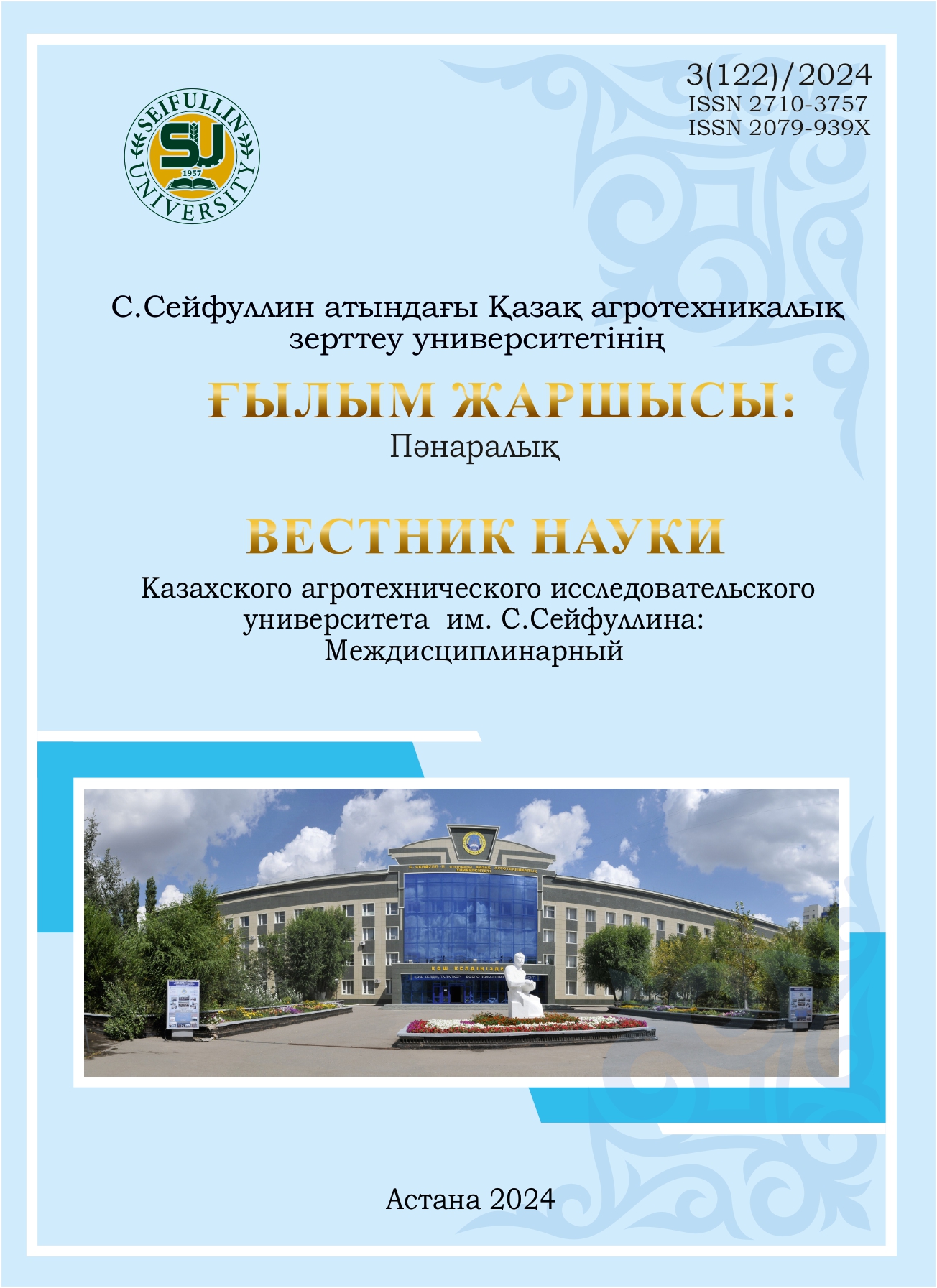Effect of feeding different types of feed on the cultivation of freshwater Rosenberg shrimp (macrobrachium rosenbergii) in a recirculating aquaculture system
DOI:
https://doi.org/10.51452/kazatu.2024.3(122).1749Keywords:
shrimp; RAS; feed; pool.Abstract
Background and purpose. The giant shrimp is an object of mass cultivation in the countries of Southeast Asia, where this species has long been grown extensively. In recent decades, many studies have been conducted on the breeding and cultivation of freshwater shrimp, as a result of which the aquaculture of these aquatic organisms has reached a significantly higher level, due to the widespread introduction of intensive methods and progressive technologies. In this regard, the study of feeding methods and diets for these aquatic organisms is of great importance.
Materials and methods. The research was carried out at the Kazakh-Czech International Scientific Center for Aquaculture of the NAO Kazakh Agrotechnical Research University named after S.Seifullin on feeding the freshwater Rosenberg shrimp (macrobrachium rosenbergii). A recirculating aquaculture system (RAS) was used to keep the shrimp, a thermo-oximeter and a pH meter were used to conduct hydrochemical studies. Generally accepted methods for aquaculture were used to calculate linear and weight indicators.
Results. The effectiveness of the combined feeding method was revealed, in which the absolute gain in juvenile shrimp during the growing period was 458 mg, and the relative gain was 347%. Almost identical results were shown by the other groups with an absolute gain of 363 mg and 396 mg, and a relative gain of 231% and 228%, respectively.
Conclusion. Based on the conducted studies, optimal feeding rations for juvenile Rosenberg shrimp for favorable maintenance in RAS were developed. The combined method of feeding with live feed and compound feed showed the best result and indicates the best digestibility of nutrients than when feeding with mono-feeds. One of the reasons for the decrease in survival could be the lack of nutrients and microelements when feeding exclusively frozen bloodworms.

